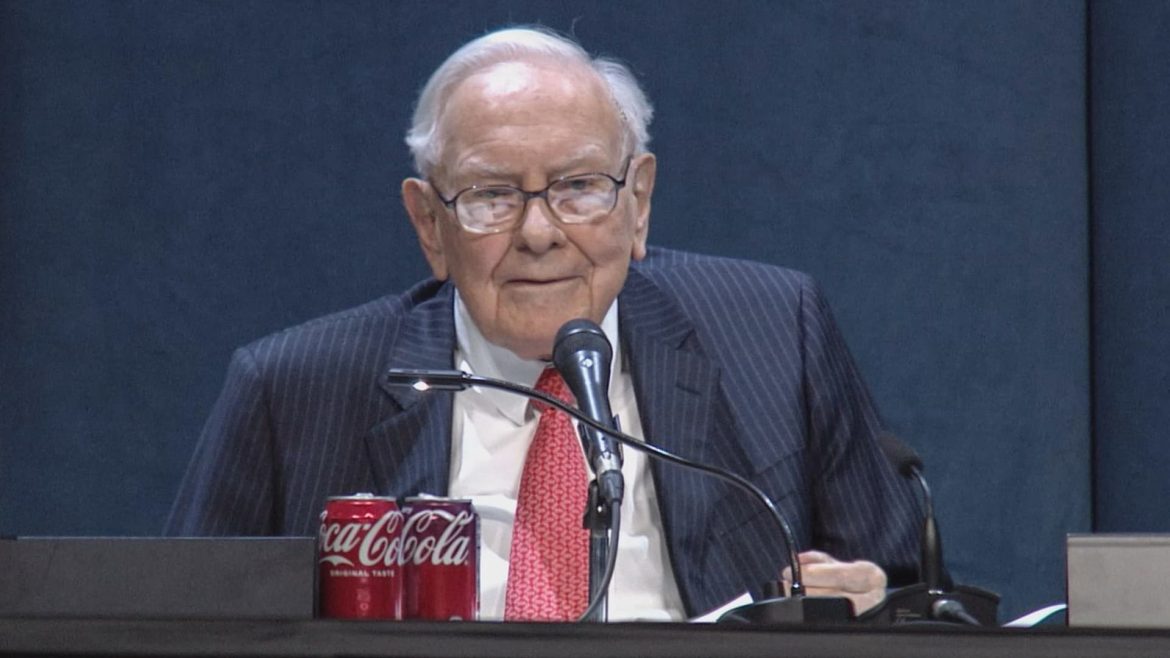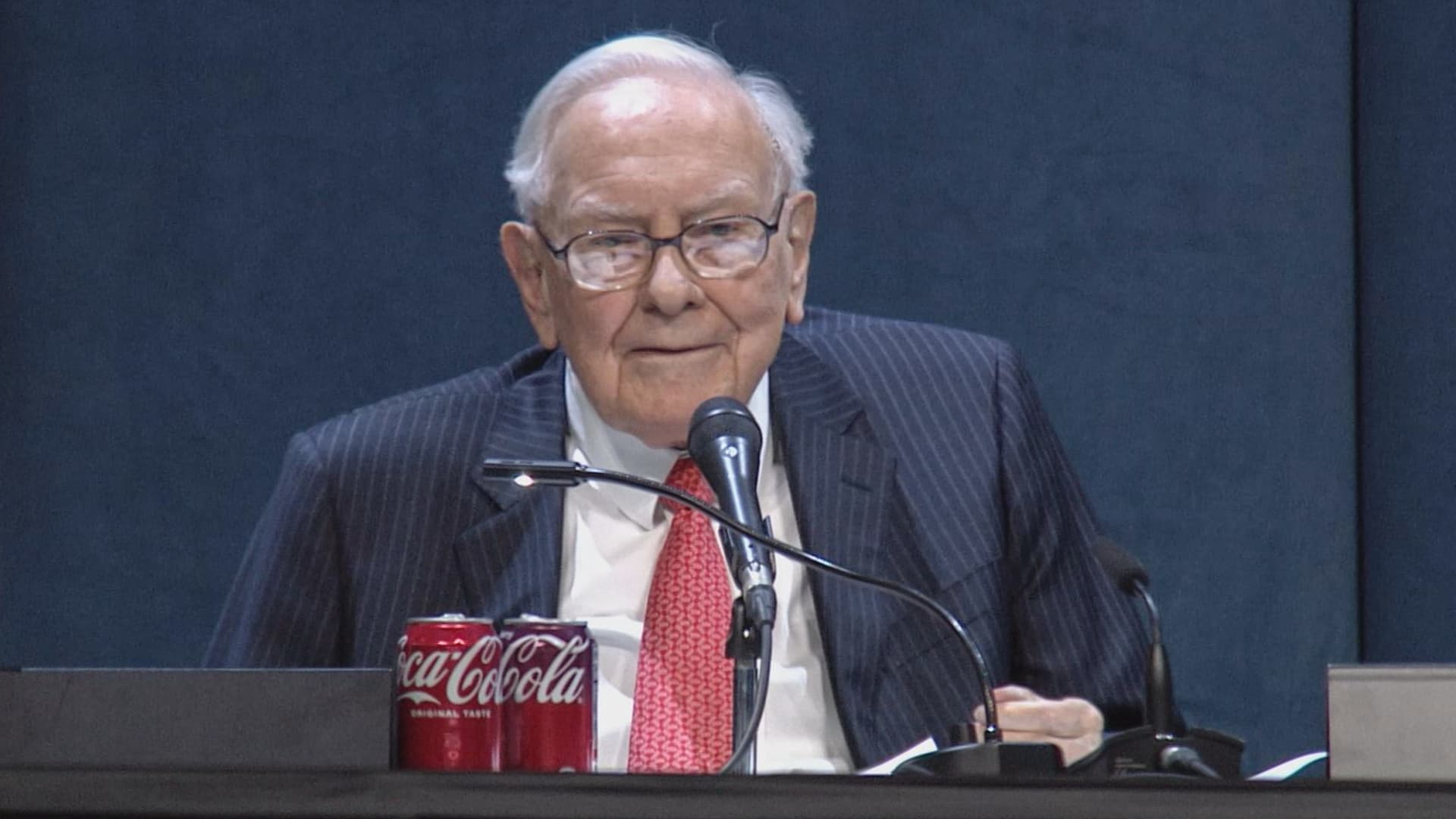Berkshire Hathaway’s Earnings Dip: A Deep Dive into the Conglomerate’s Performance
Introduction: A Mixed Bag of Results
Berkshire Hathaway, the sprawling conglomerate helmed by the legendary investor Warren Buffett, recently delivered a quarterly earnings report that left investors with a mix of optimism and concern. The company’s second-quarter earnings for 2025 revealed a 4% decline in operating earnings, a figure that, while modest, has sparked discussions about the conglomerate’s future trajectory. This report delves into the factors behind this earnings dip, examining the strengths and weaknesses of Berkshire’s diverse portfolio and assessing the implications for its long-term prospects.
The Numbers Behind the Headline
The headline figure—a 4% decline in operating earnings to $11.16 billion—is the first thing that catches the eye. For a company of Berkshire’s size and influence, even a small dip in earnings can signal broader economic trends or internal challenges. However, interpreting this decline requires a nuanced understanding of Berkshire’s business model, which spans insurance, railroads, energy, manufacturing, and retail.
The decline in operating earnings was driven primarily by a downturn in the insurance sector, a cornerstone of Berkshire’s business. Insurance operations are crucial because they generate “float”—the premiums collected before claims are paid out—which Buffett then deploys into investments. When insurance underwriting performance falters, it directly impacts the bottom line.
Insurance Underwriting: A Key Weakness
The insurance sector’s underperformance was the most significant contributor to the earnings dip. Several factors contributed to this downturn:
Increased Claims and Natural Disasters
Natural disasters, such as the Southern California wildfires earlier in the year, led to a surge in insurance claims, straining profitability. Economic downturns and changes in legal landscapes can also increase claims, further pressuring the insurance business.
Competitive Pricing Pressures
The insurance industry is highly competitive, with companies constantly vying for market share. This competition can lead to aggressive pricing strategies that erode profit margins, making it difficult for insurers to maintain profitability.
Investment Performance
The returns generated from investing the insurance float are a critical component of the insurance sector’s performance. A weaker investment environment can negatively impact the overall profitability of insurance operations, as seen in the recent quarter.
Bright Spots in a Challenging Quarter
Despite the challenges in the insurance sector, other key segments of Berkshire’s empire demonstrated resilience and growth. The company’s diversified portfolio helped mitigate the impact of the insurance downturn, showcasing the strength of its business model.
Railroads: A Steady Performer
Berkshire’s railroad operations, primarily represented by BNSF, benefited from increased freight volumes and improved operational efficiency. Railroads are a vital artery of the American economy, and BNSF’s performance often reflects the health of industrial and consumer sectors. The railroad segment’s strong performance was a bright spot in an otherwise challenging quarter.
Energy: A Growing Sector
The energy segment, which includes utilities and renewable energy projects, continued to deliver steady earnings. The demand for electricity and the growing focus on renewable energy sources have fueled growth in this sector. Berkshire Hathaway Energy’s diversified portfolio of energy assets positions it well to capitalize on long-term trends in the energy market.
Manufacturing: Adaptability and Profitability
Berkshire’s manufacturing businesses span a wide range of industries, from industrial products to consumer goods. These businesses demonstrated their ability to adapt to changing market conditions and maintain profitability, even in the face of economic headwinds.
Service and Retailing: Consumer Strength
The service and retailing sectors benefited from strong consumer spending and effective management strategies. Berkshire’s diverse range of businesses in these sectors provides a buffer against sector-specific downturns, ensuring steady earnings even in challenging economic environments.
The Tariff Cloud: A Looming Challenge
Beyond the specific performance of individual sectors, Berkshire Hathaway is bracing for the potential impact of tariffs. The ongoing trade tensions and the imposition of tariffs by the U.S. government create uncertainty for businesses across various industries.
Increased Costs and Reduced Demand
Tariffs can increase the cost of raw materials and imported goods, squeezing profit margins for companies that rely on international supply chains. Additionally, tariffs can lead to retaliatory measures from other countries, reducing demand for American goods and services in international markets.
Supply Chain Disruptions
The imposition of tariffs can disrupt established supply chains, forcing companies to find alternative sources of supply. This process can be costly and time-consuming, further pressuring profitability.
Warren Buffett has voiced concerns about the potential negative impacts of tariffs on the American economy and on Berkshire Hathaway’s businesses. The company is closely monitoring the situation and taking steps to mitigate the risks, but the uncertainty remains a significant challenge.
Cash Mountain and Share Repurchases
One of the perennial topics surrounding Berkshire Hathaway is its massive cash pile. In the first quarter of 2025, this hoard swelled to a record $347.68 billion. While a large cash reserve provides financial flexibility and the ability to seize opportunities during market downturns, it also raises questions about capital allocation.
Berkshire Hathaway has historically been reluctant to engage in large-scale share repurchases, preferring to deploy capital into acquisitions or internal investments. However, in recent years, the company has become more open to share buybacks as a way to return value to shareholders when other opportunities are limited. Notably, the company made no share repurchases in Q1, perhaps awaiting more favorable valuations.
VeriSign Stake Reduction: A Strategic Move
Another significant development was Berkshire Hathaway’s decision to reduce its stake in VeriSign, the internet infrastructure company. The company decreased its ownership from 14.2% to 9.6%, selling roughly one-third of its holdings.
While the exact reasons for this decision remain undisclosed, several factors could have influenced it:
Portfolio Rebalancing
Berkshire Hathaway may have decided to rebalance its portfolio, shifting capital from one sector to another based on its investment outlook. This move could reflect a strategic decision to allocate capital to more promising opportunities.
Valuation Concerns
The company may have believed that VeriSign’s stock was overvalued and decided to take profits. This decision aligns with Buffett’s long-standing philosophy of buying undervalued assets and selling overvalued ones.
Alternative Opportunities
Berkshire Hathaway may have identified more attractive investment opportunities elsewhere and decided to redeploy capital. This move could signal a shift in the company’s investment strategy, focusing on sectors with stronger growth prospects.
Market Reaction: A Muted Response
Following the earnings release, Berkshire Hathaway’s stock price experienced a slight decline, hovering near the flat line in early trading. The market reaction was relatively muted, suggesting that investors had already priced in the potential challenges facing the company. Furthermore, the stock had already seen a 5% fall the previous Tuesday, indicating that some of the negative sentiment was already reflected in the share price.
A Conglomerate at a Crossroads?
Berkshire Hathaway’s recent earnings report paints a complex picture of a conglomerate navigating a challenging economic environment. While certain sectors experienced setbacks, others demonstrated resilience and growth. The company’s massive cash pile provides financial flexibility, but also raises questions about capital allocation.
The potential impact of tariffs, the need to deploy capital effectively, and the eventual transition to a new generation of leadership are all challenges that Berkshire Hathaway must navigate. The company’s long-term prospects remain bright, but adaptability and strategic decision-making will be crucial for continued success in an ever-changing global landscape.
Conclusion: Navigating the Future with Resilience
Berkshire Hathaway remains a formidable force in the business world, with a diversified portfolio, a strong management team, and a long track record of success. The recent earnings dip, while notable, does not diminish the company’s long-term prospects. Instead, it highlights the challenges and opportunities that lie ahead.
As Berkshire Hathaway navigates these challenges, its performance will continue to be closely watched by investors and analysts around the world. The company’s ability to adapt to changing economic conditions, deploy capital effectively, and transition to new leadership will be critical to its future success. Despite the recent dip, Berkshire Hathaway’s long-term prospects remain bright, and its resilience in the face of adversity is a testament to its enduring strength.





